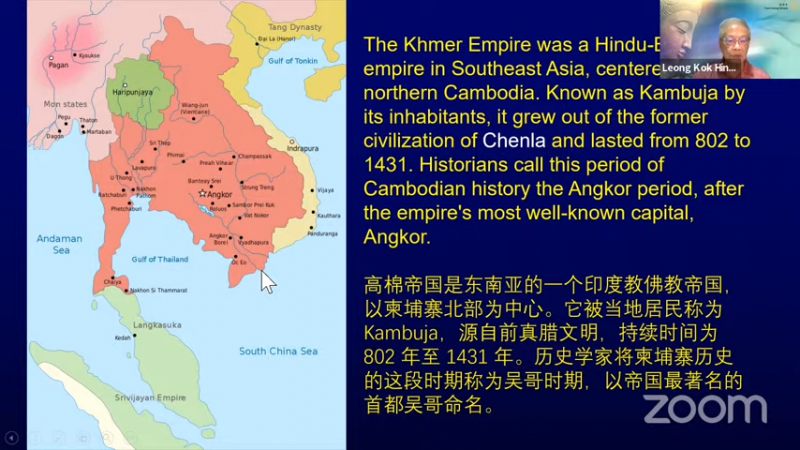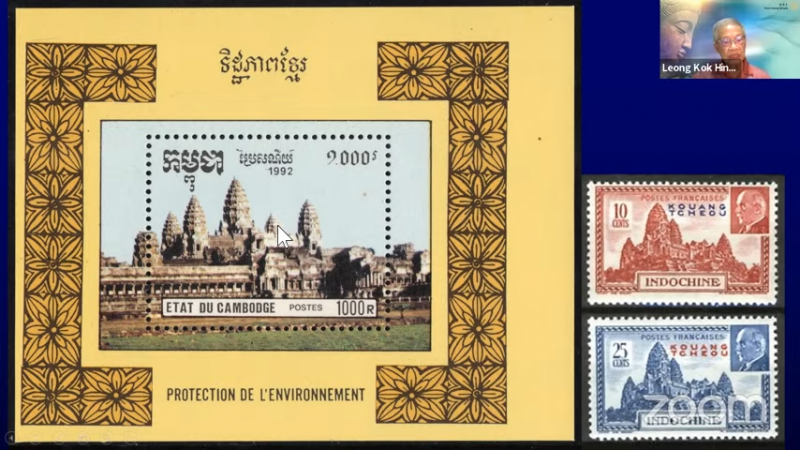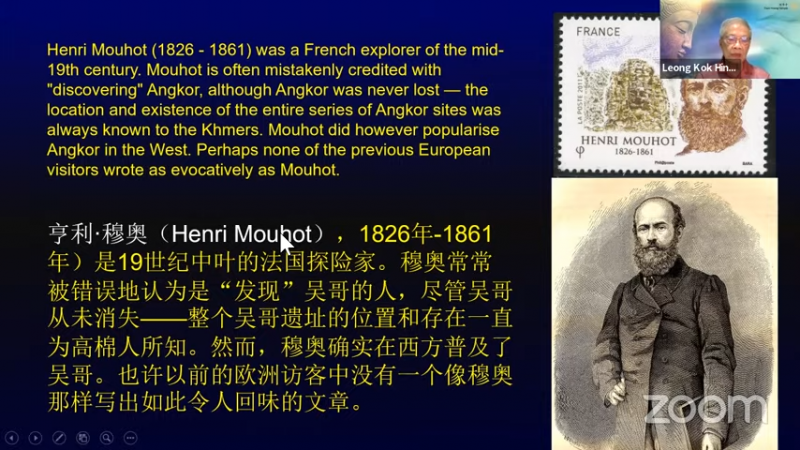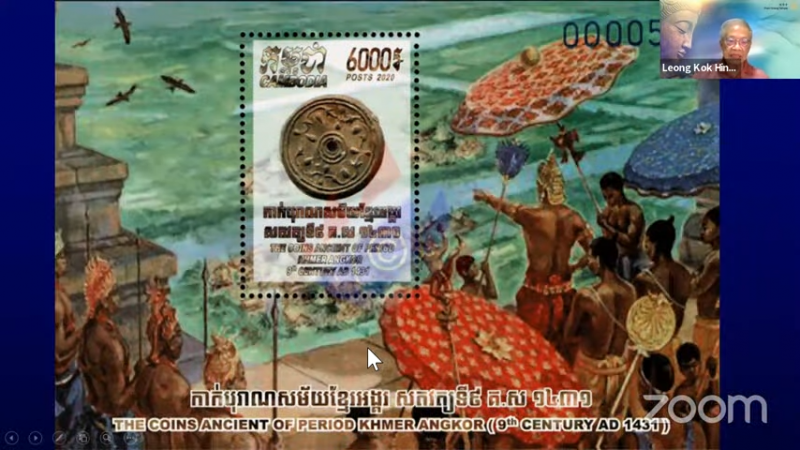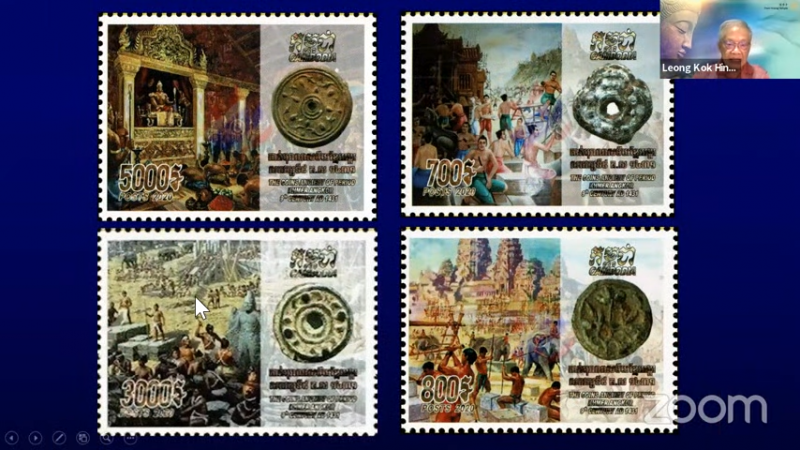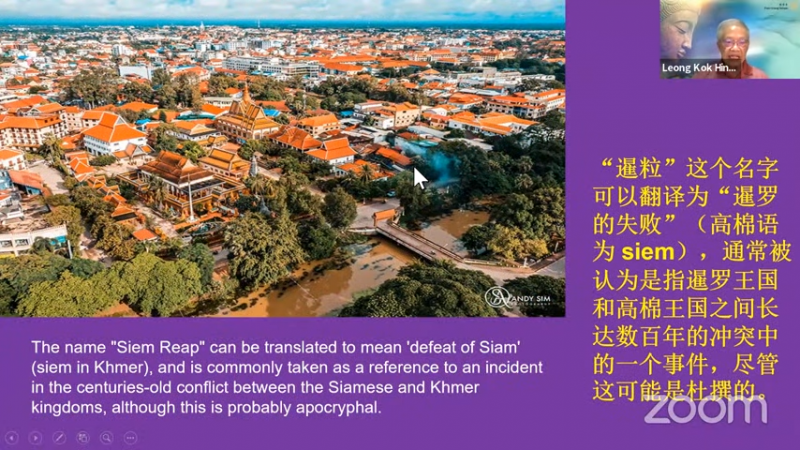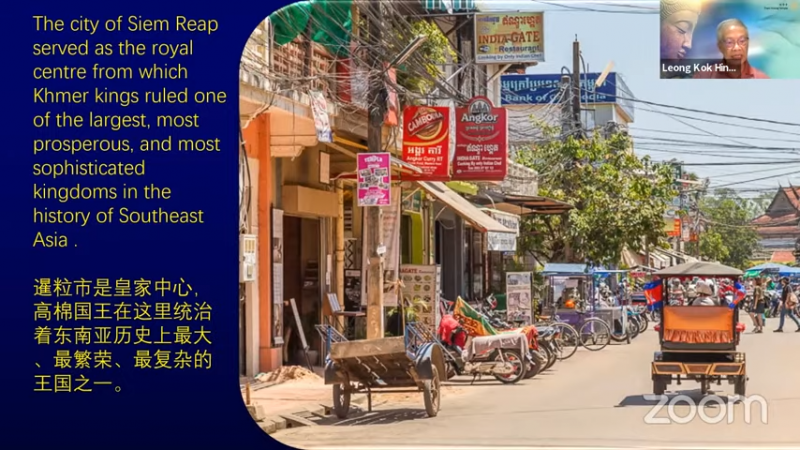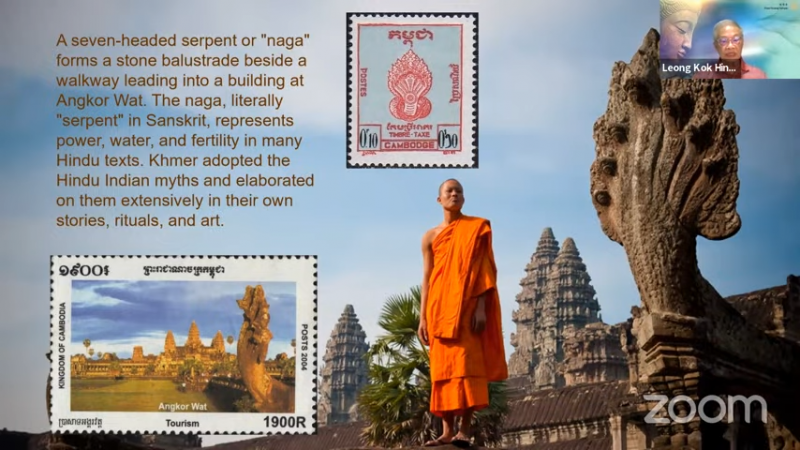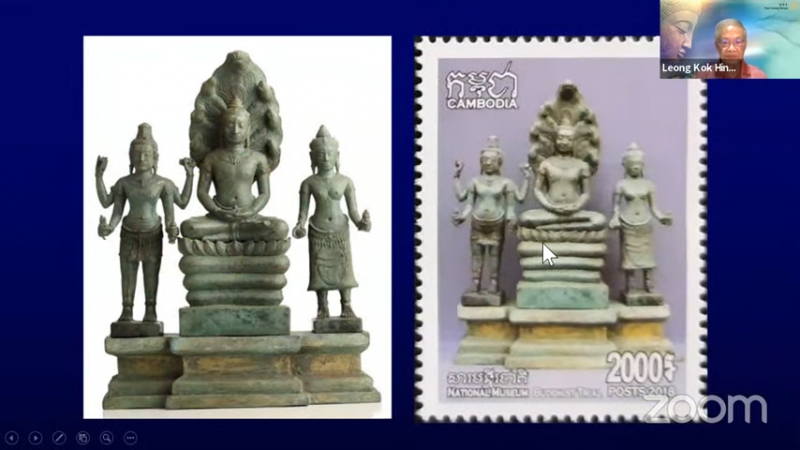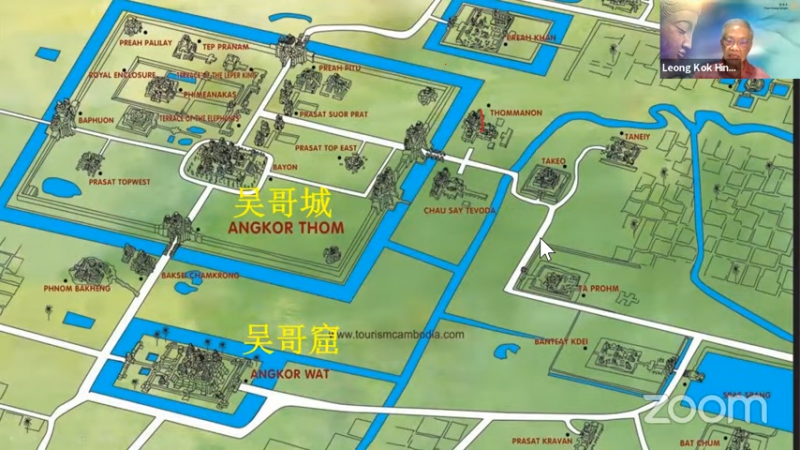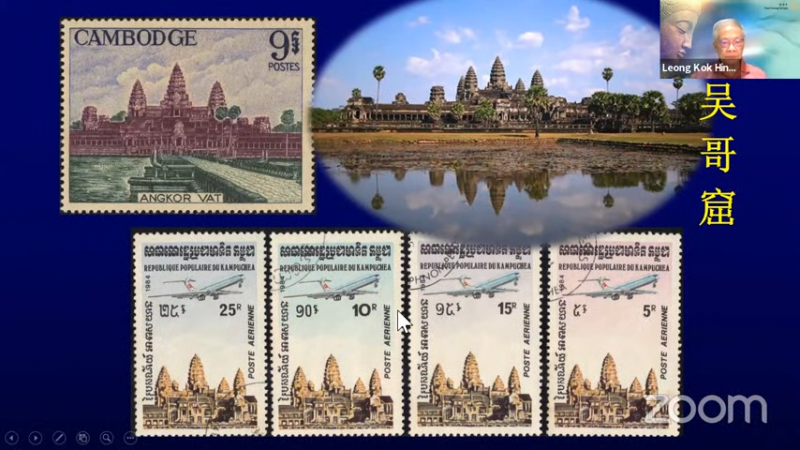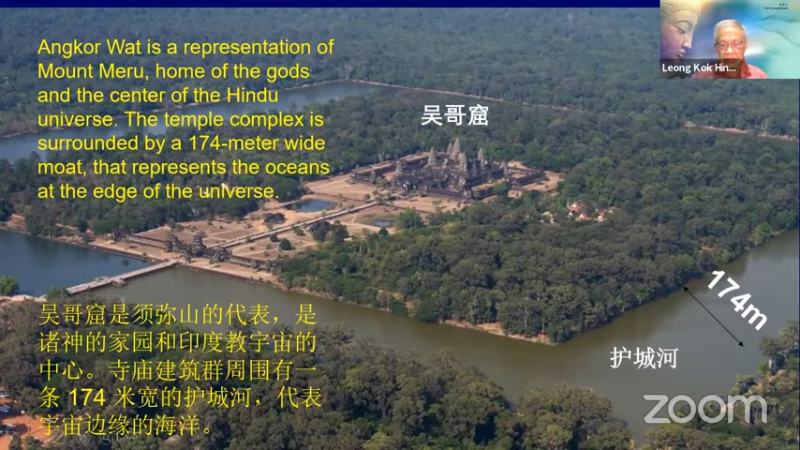Submitted by aier on

Than Hsiang's Pu Men Pin Online Gong Xiu Dharma Sharing (01/03/2024)
Former Principal of International Buddhist College, Brother Leong Kok Hing sharing " Angkor "
Angkor is located in Siem Reap in northern Cambodia.
Next to Siem Reap is Tonle Sap, Cambodia's largest freshwater lake and the largest freshwater lake in Southeast Asia.
Angkor was inscribed as a World Heritage Site in 1992.
Henri Mouhot (1826 - 1861) was a French explorer of the mid-19th century. Mouhot is often mistakenly credited with "discovering" Angkor, although Angkor was never lost – the location and existence of the entire series of Angkor sites was always known to the Khmers. Mouhot did however popularise Angkor in the West. Perhaps none of the previous European visitors wrote as evocatively as Mouhot. In his posthumously published "Travels in Siam, Cambodia and Laos", Mouhot compared Angkor to the Egyptian pyramids.
The Khmer Empire was a Hindu-Buddhist empire in Southeast Asia, centered in northern Cambodia. Known as Kambuja by its inhabitants, it grew out of the former civilization of Chenla and lasted from 802 to1431. Historians call this period of Cambodian history the Angkor period, after the empire's most well-known capital, Angkor.
According to inscriptions, the construction of Angkor Wat is thought to have taken approximately 30 years, 300,000 laborers and 6,000 elephants. Angkor Wat was initially designed and constructed in the first half of the 12th century. It was built without the aid of any machinery, as there was no machinery available at that time.
The sandstone blocks used were quarried from the holy mountain of Phnom Kulen around 50 kilometers/31 miles away from the site. The heaviest block weighs up to 1,500 kilograms / 3300 pounds, so the logistics of moving this sandstone are mind-blowing and must have been extremely labor-consuming.
Angkor Wat is a representation of Mount Meru, home of the gods and the center of the Hindu universe.
A seven-headed serpent or "naga" forms a stone balustrade beside a walkway leading into a building at Angkor Wat. The naga, literally "serpent" in Sanskrit, represents power, water, and fertility in many Hindu texts. Khmer adopted the Hindu Indian myths and elaborated on them extensively in their own stories, rituals, and art.
It is said that six weeks after Gautama Buddha began meditating under the Bodhi Tree, the sky darkened for seven days, and a heavy rain started. However, the mighty King of Serpents, Mucalinda, came from beneath the earth and protected Him with his hood. When the storm stopped, the serpent king Mucilanda assumed his human form, bowed before the Buddha and returned to his palace in joy.
One of the most celebrated features of Angkor Wat is the incredible bas-relief friezes that line the inner walls of the outer gallery. Together in total measuring around 520m long.
The temple complex is surrounded by a 174-meter wide moat, that represents the oceans at the edge of the universe.
The 820 foot, sandstone causeway leads to a terrace at the entrance of Angkor Wat.
Angkor is divided into two parts, Angkor Wat and Angkor Thom.
After the Cham people of modern-day Vietnam sacked Angkor in 1177, King Jayavarman VII (reigned 1181-c. 1220) decided that the Hindu gods had failed him. When he built a new capital nearby, Angkor Thom, he dedicated it to Buddhism.
Thereafter, Angkor Wat became a Buddhist shrine, and many of its carvings and statues of Hindu deities were replaced by Buddhist art.
In the early 15th century Angkor was abandoned.
Still Theravada Buddhist monks maintained Angkor Wat, which remained an important pilgrimage site and continued to attract European visitors. Angkor Wat was "rediscovered" after the French colonial regime was established in 1863.
If Angkor Thom has magnificent façade and looks impressive from all angles, Bayon from a distance seems like a rather formless jumble of stone. It's only when getting inside the temple, you will find out that the interior is a stunning maze of bas-relief galleries, serene stone towers and passageways.
Bayon's most distinctive feature is 216 gigantic smiling stone faces adorned on the temple's 54 towers. There are several hypotheses about these enigmatic faces. Many scholars concluded that these faces represented for King Jayavarman VII himself. Others supposed that the faces depicted Bodhisattva Avalokitesvara or Lokesvara, a significant Buddhist deity who signifies the virtue of compassion.
The Bayon, as it stands today, does not reflect the original design of Jayavarman VII and his architects. This is because the temple has been added to over the centuries. Angkor Thom was so well fortified that later kings continued to use it as their royal city.
While it was common for kings to build a new state temple to reflect their own religious affiliations, Jayavarman VII's successors found it simpler to remodel the Bayon rather than remove it and build a new temple. This accounts for the appearance of both Buddhist and Hindu imagery at the temple, depending on the religious affiliation of the new king.
4 faces, looking toward the cardinal directions, are carved on the sides of 54 standing towers at Bayon Temple. Total 4 X 54=216 faces.
Each face is 4 metres high and is facing one of the cardinal directions.
The Bayon Temple, which was constructed during Jayavarman VII's reign, is unique as it is the only Buddhist state temple and the last to be built in the Angkor Empire (also sometimes called the Khmer Empire).
The similarity of the 216 gigantic faces on the temple's towers has led many scholars to the conclusion that the faces are representations of Jayavarman VII himself.
It is also said that the iconography of the four faces represent the Bodhisattva Avalokiteshvara and they are generally believed to to be the four faces of King Jayavarman VII.
A number of significant temples are dotted around Angkor Wat and Angkor Thom within the Angkor Archaeological Park, including Ta Prohm, Preah Khan, Banteay Kdei, Phnom Bakheng, Ta Keo, Ta Som, East Mebon, Pre Rup, and Neak Pean.
For more information, please browse https://www.youtube.com/watch?v=6Z5SW5VLKdc
Spread the Buddha's teachings to guide more people to study Buddhism.
Continue diligently in the path studying the Buddha's teachings and listening to the Dharma.
Follow us on:
https://linktr.ee/thanhsiang








